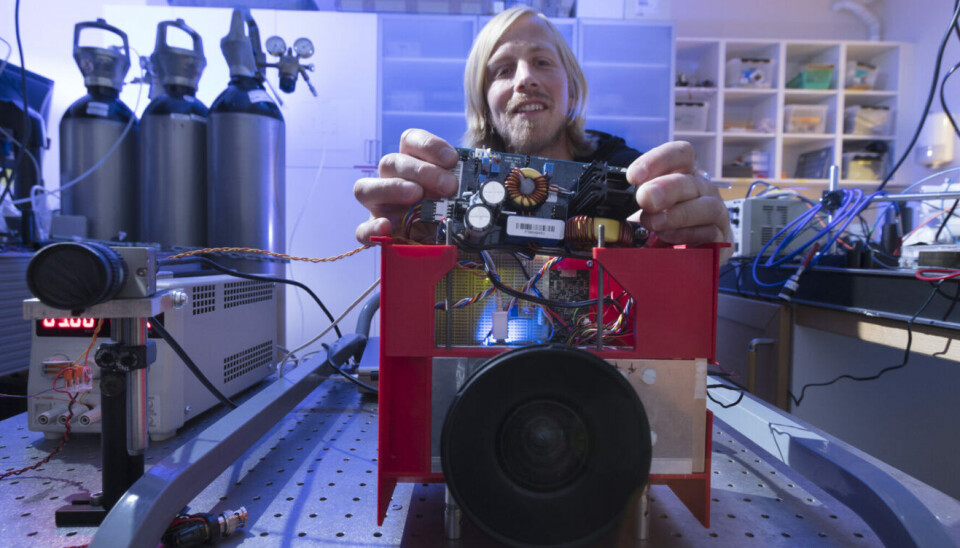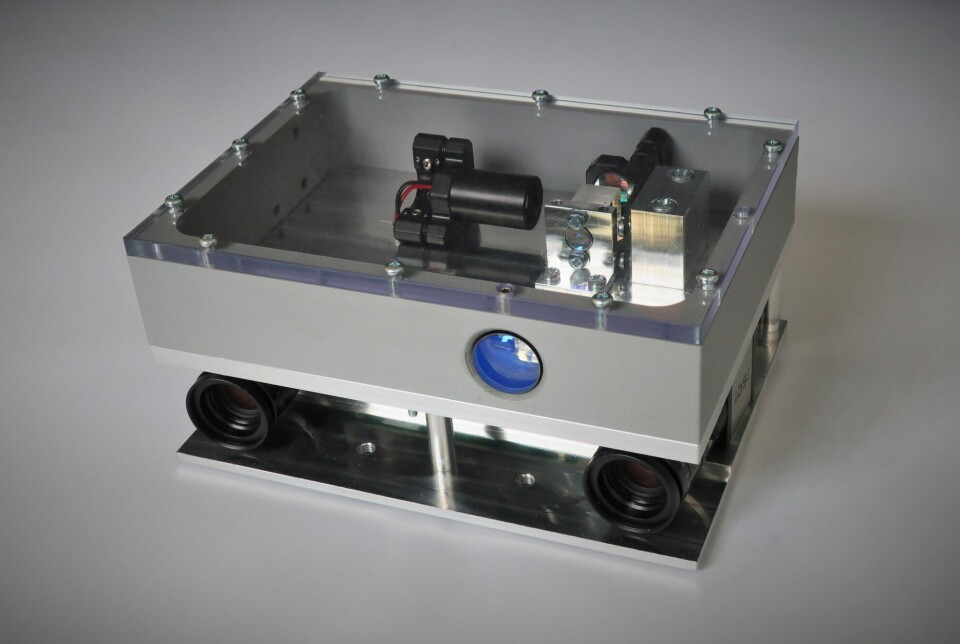THIS ARTICLE/PRESS RELEASE IS PAID FOR AND PRESENTED BY SINTEF - read more

Robots can identify and remove space junk
There is a lot of space junk orbiting the Earth. Norwegian researchers believe that in the future, there will be a market for its removal and have developed an entirely new type of robot vision that will make this possible.
SINTEF is developing a new 3D camera that is robust and accurate enough to be the ‘eyes’ of a planetary rover exploring the surface of Mars. However, since the European Space Agency (ESA) withdrew from its collaboration with the Russians because of the war in Ukraine, SINTEF researchers are now looking into other applications closer to Earth.
“Mars is still an interesting target for us,” Jostein Thorstensen at SINTEF says. “But right now it all seems a little far away, so we’re looking at other opportunities. Servicing satellites and the removal of space junk have emerged as very interesting areas.”
Thorstensen is a senior research scientist at SINTEF’s Department of Smart Sensors and Microsystems.
There are thousands of satellites and many of them require servicing and repairs in order to extend their lifetimes. Some simply need refuelling. Increasing amounts of space junk are also becoming a major problem. Thousands of decommissioned satellites are still in orbit around the Earth.
“We’re already in dialogue with major European players in the space sector and are pleased to see that our technologies are stimulating interest,” Thorstensen says. “Early in 2023 we’re planning to conduct initial tests of the camera in collaboration with these organisations."
Environmental protection in space?
The ESA is eager to see that legislation governing environmental protection should also apply in space. Between 3,000 and 4,000 of the satellites sent into Earth orbit since 1957 now represent space junk.
The number of satellites orbiting our planet is growing explosively.
Since 2019, the Elon Musk-owned company SpaceEx has launched more than 3,000 satellites into low Earth orbits. And this is just the beginning.
Musk’s Starlink system consists of small, low-tech satellites. But others may be much larger and more complex, costing hundreds of millions of Norwegian crowns.

School of hard knocks
A robot equipped with a camera and operating in orbit around the Earth has to be robust.
SINTEF’s camera system has succeeded in demonstrating that it is exactly that. In preparation for the extreme conditions on Mars, the equipment was subjected to testing under harsh conditions.
Thorstensen’s colleague Runar Dahl-Hansen says that the camera has to withstand severe shaking, high and low temperatures in a vacuum, high exposure to gamma radiation and electric fields five times stronger than a lightning strike.
“In fact, the properties of the microscopic mirror become enhanced after exposure,” Dahl-Hansen says. “Stress tests have been found to induce beneficial chemical defects and cause them to be distributed in such a way that they improve the performance of the piezoelectric material."
The ESA want more
“The ESA was so pleased with the camera that it awarded SINTEF funding for a follow-up project,” Thorstensen says. “Even if the mission with the European Martian rover is now postponed due to the ESA’s withdrawal from its collaboration with the Russians, it would never have been realistic to have a camera ready at such short notice."
“We’re still in a relatively early phase,” says Thorstensen. “The technology will not be ready for use in space for several years. But interest from major space sector players offers hope that in the future, SINTEF technology can look forward to a role in space – either on a Martian rover or a servicing satellite. Preferably both."
“It is compact, consumes very little energy, and provides fantastically detailed close-up images. Weight, size and energy consumption are key factors when you put a robot into Earth orbit. Our system has less complex optics control electronics than other 3D cameras, which makes it potentially more robust and reliable,” Thorstensen says.

What about market potential?
“The use of and need for specialised 3D cameras is on the increase,” says Thorstensen. “For example, organisations operating in fields such as industrial robotics, logistics, medicine and inspection are all interested in highly miniaturised cameras offering high-quality 3D data."
See more content from SINTEF:
-
How Svalbard is becoming a living lab for marine restoration
-
New study: Even brand-new apartments in cities can have poor indoor air quality
-
Fresh hope for patients with chronic inflammatory bowel disease
-
Testing a giant ship: May take five kilometres to stop
-
A robot is helping researchers hunt for the best cancer warriors
-
Locomotives that run on diesel can be electrified





































